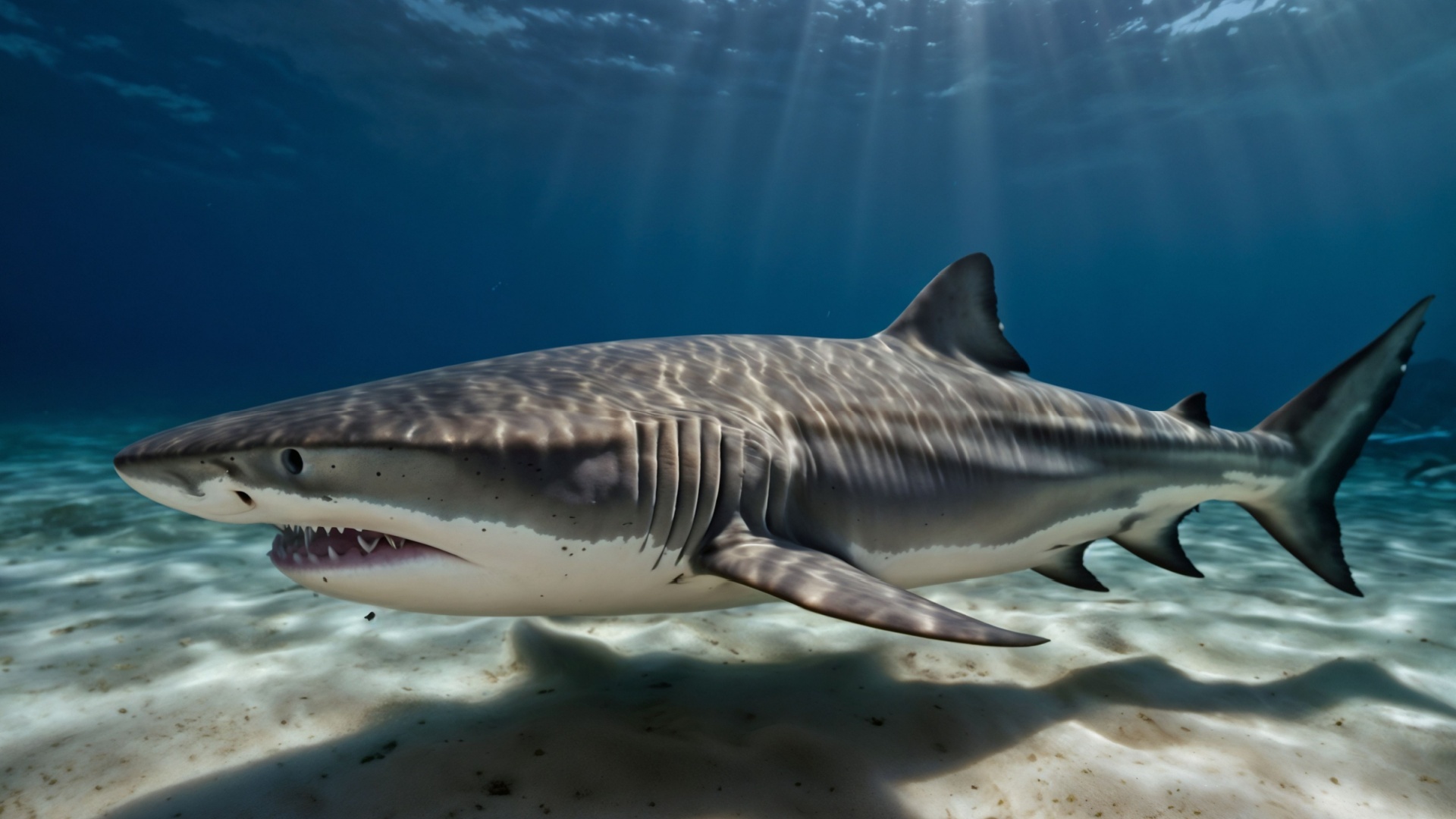Sharks get a pretty bad rap in movies, but let’s be honest – some of these ocean predators really earn their fierce reputations.
With powerful jaws, lightning-fast reflexes, and a whole lot of attitude, certain sharks rule the seas as some of the most aggressive creatures in the water.
Their behavior isn’t about being “mean” or out to get humans – it’s all instinct, survival, and some seriously sharp teeth.
These ocean heavyweights have made a name for themselves for good reason, whether it’s their territorial nature, curious test bites, or bold hunting habits. Some are massive, built for speed, or just a little too fearless when investigating unfamiliar objects (including people).
Curious to know which sharks are the most intimidating and why they’ve earned their fierce reputations? Keep reading, you might think twice before wading too far from shore.
1. Great White Shark
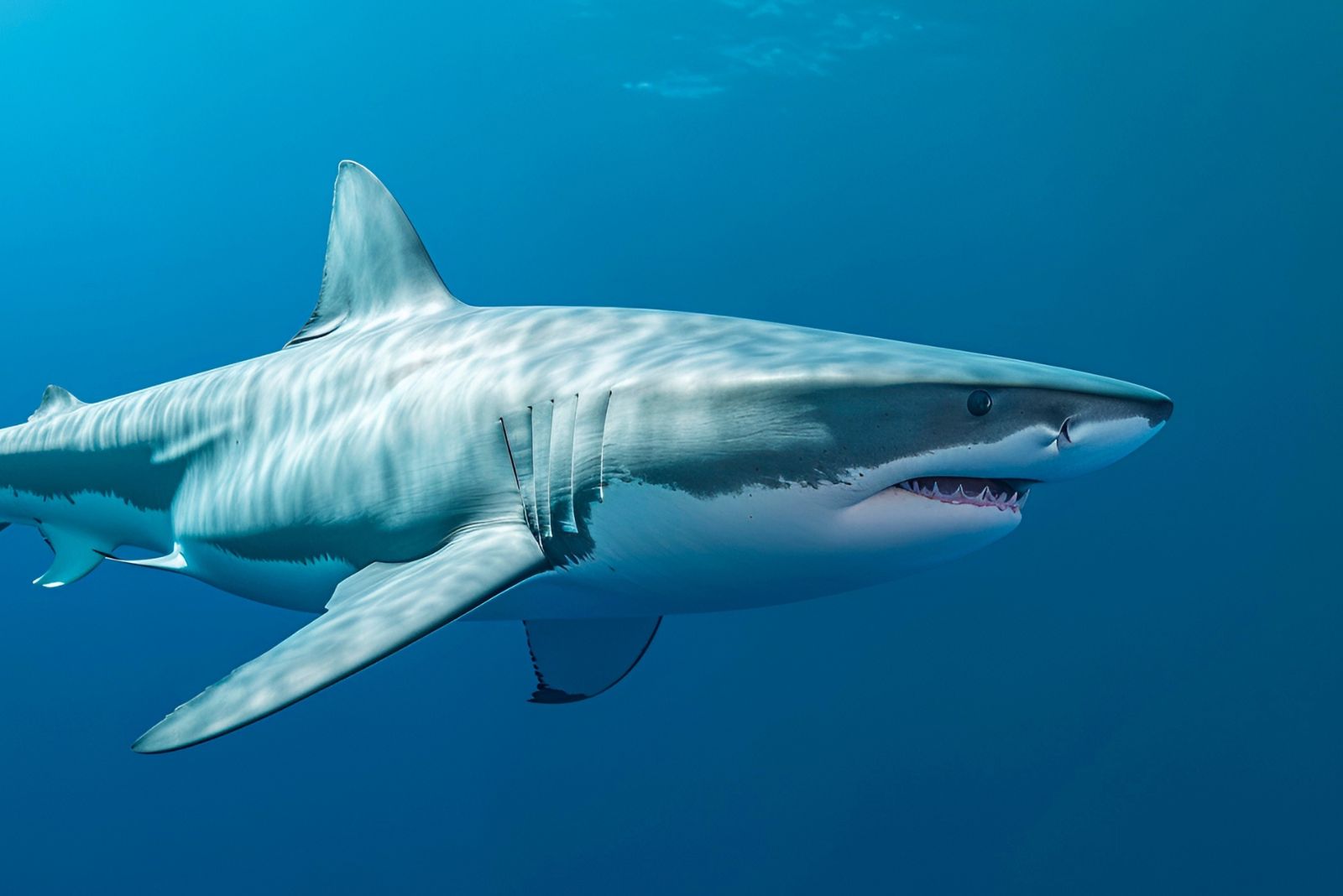
Arguably the most famous shark of all time, the Great White has built a reputation as the ocean’s top predator, and for good reason!
With powerful jaws, serrated teeth, and the ability to breach the surface while hunting, this shark means business. What makes it so dangerous isn’t just its size (growing over 20 feet long) but its curiosity and hunting strategy.
Great Whites often use “test bites” to investigate unfamiliar objects, including boats and, unfortunately, swimmers. They’re ambush predators, striking from below with incredible force, often mistaking humans for seals – one of their favorite meals.
While they rarely attack out of aggression alone, their sheer power makes even an accidental bite serious. Often found in cooler coastal waters, they tend to stick near seal colonies and areas with high fish activity.
Though they’re powerful, Great Whites play a vital role in keeping the ocean’s food chain balanced, just best admired from a distance.
2. Bull Shark
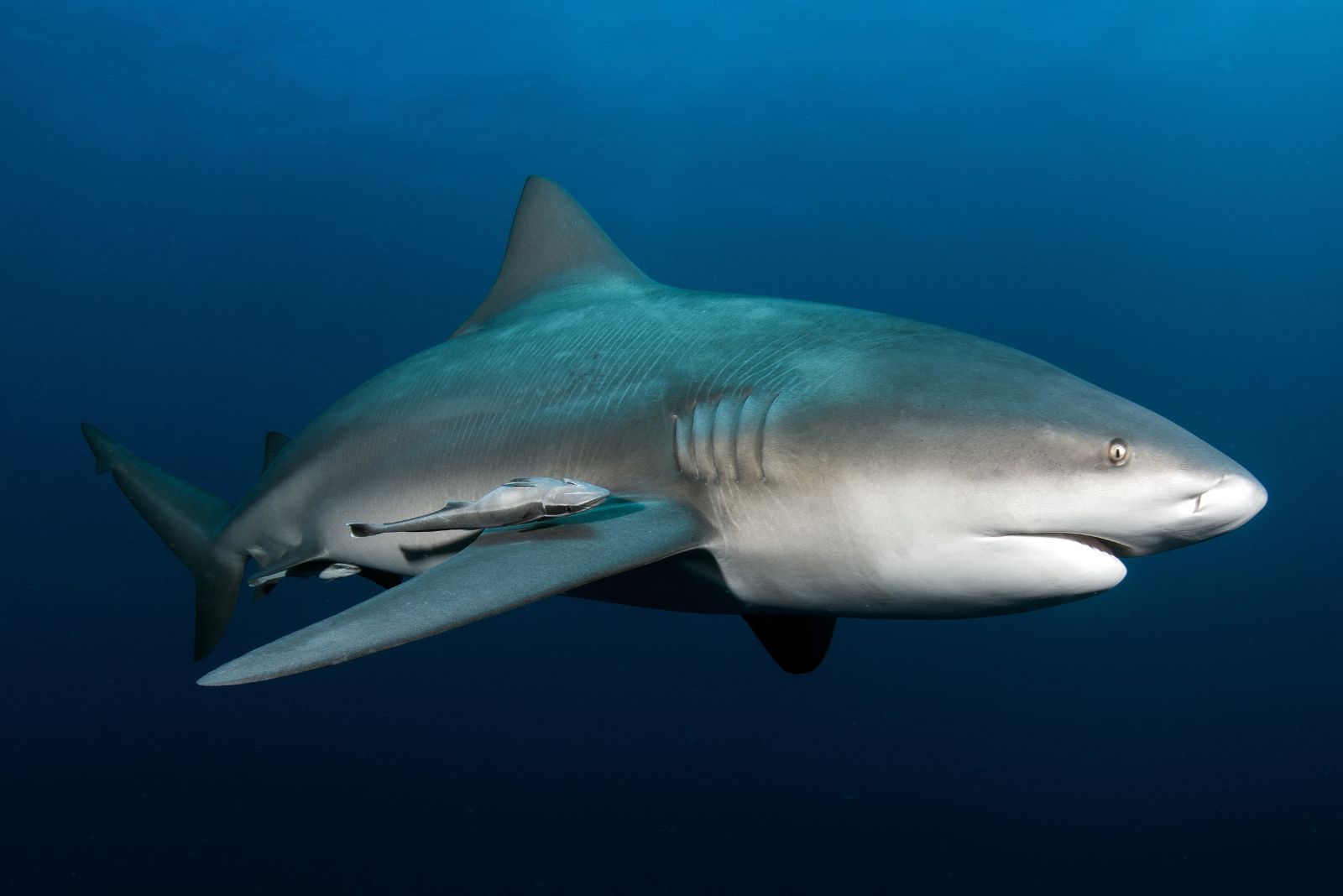
If there’s a shark you don’t want to cross paths with in shallow waters, it’s the Bull Shark.
Unlike most sharks, these guys can swim in both salt and freshwater, which means they’ve been spotted not just in oceans but even rivers and lakes.
What makes them so dangerous? Their aggressive nature paired with unpredictable behavior. Bull Sharks are highly territorial, often reacting defensively when humans or other animals enter their space. Their broad, muscular build and powerful bite make them incredibly strong, and they’re known for bumping their prey before attacking.
Often found in murky water, their poor visibility zones make them more reactive, as they rely on instincts rather than eyesight. It’s their adaptability and willingness to explore shallow waters that bring them into closer contact with humans than most sharks.
Respect their space, and they’ll likely respect yours. Just don’t test them!
3. Tiger Shark
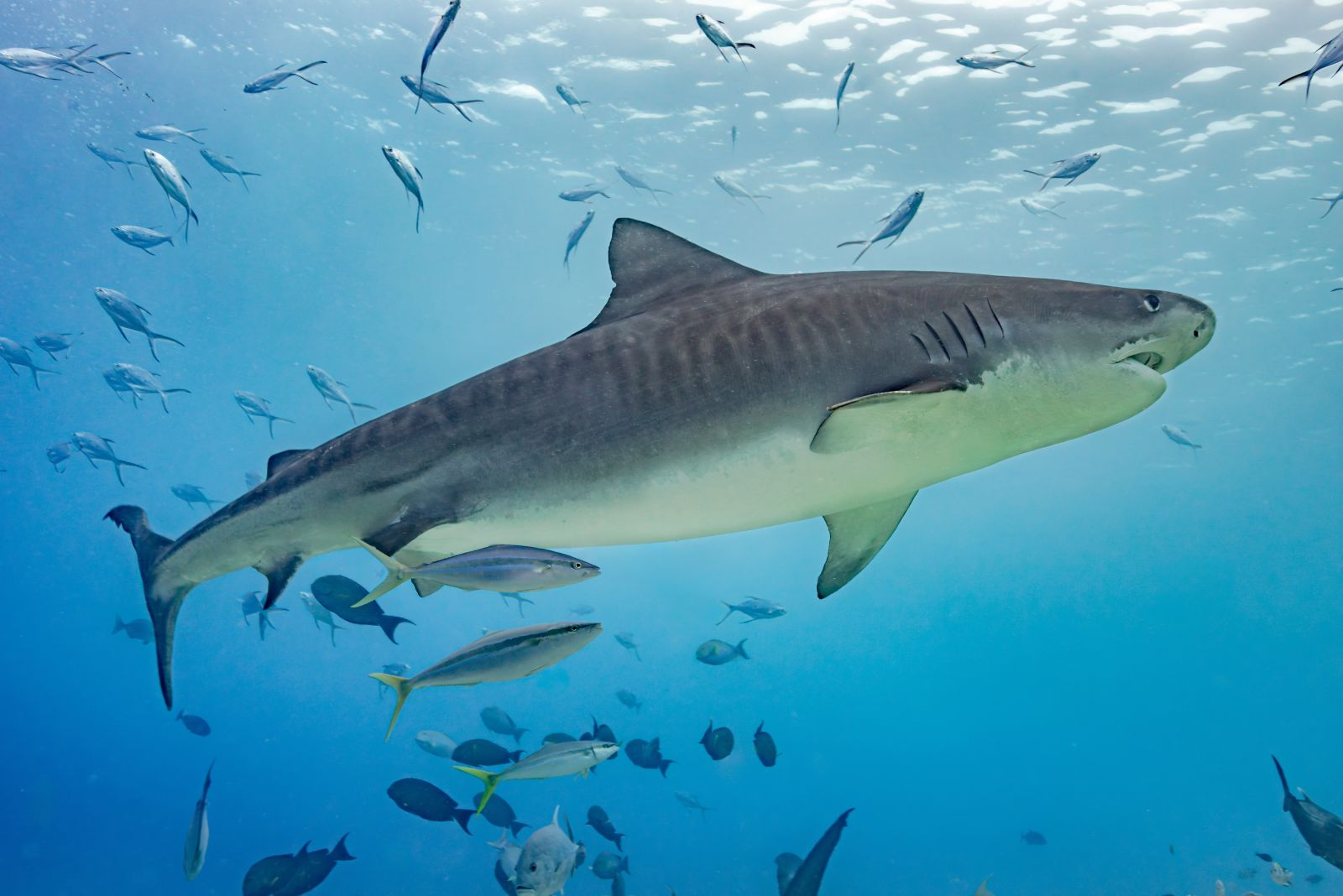
Nicknamed the “garbage can of the sea,” Tiger Sharks have earned their title by being extremely curious eaters. If it fits in their mouth, they’ll probably take a bite. License plates? Check. Tires? Sure. Sea turtles and fish? Absolutely.
Their non-picky palate makes them dangerous, as they often explore unfamiliar objects (including humans) with their teeth.
Tiger Sharks get their name from the dark, vertical stripes along their sides, which help them blend in with the water while stalking prey. Found in tropical and subtropical waters, they prefer warm coastal areas where food is plentiful.
Their size is no joke either, some can grow over 14 feet long, with incredibly strong jaws capable of crunching through bone and shells with ease. Their curiosity, combined with powerful hunting instincts, makes them unpredictable.
Though attacks are rare, their curious test bites can be risky, making them a species best observed from a safe distance.
4. Oceanic Whitetip Shark
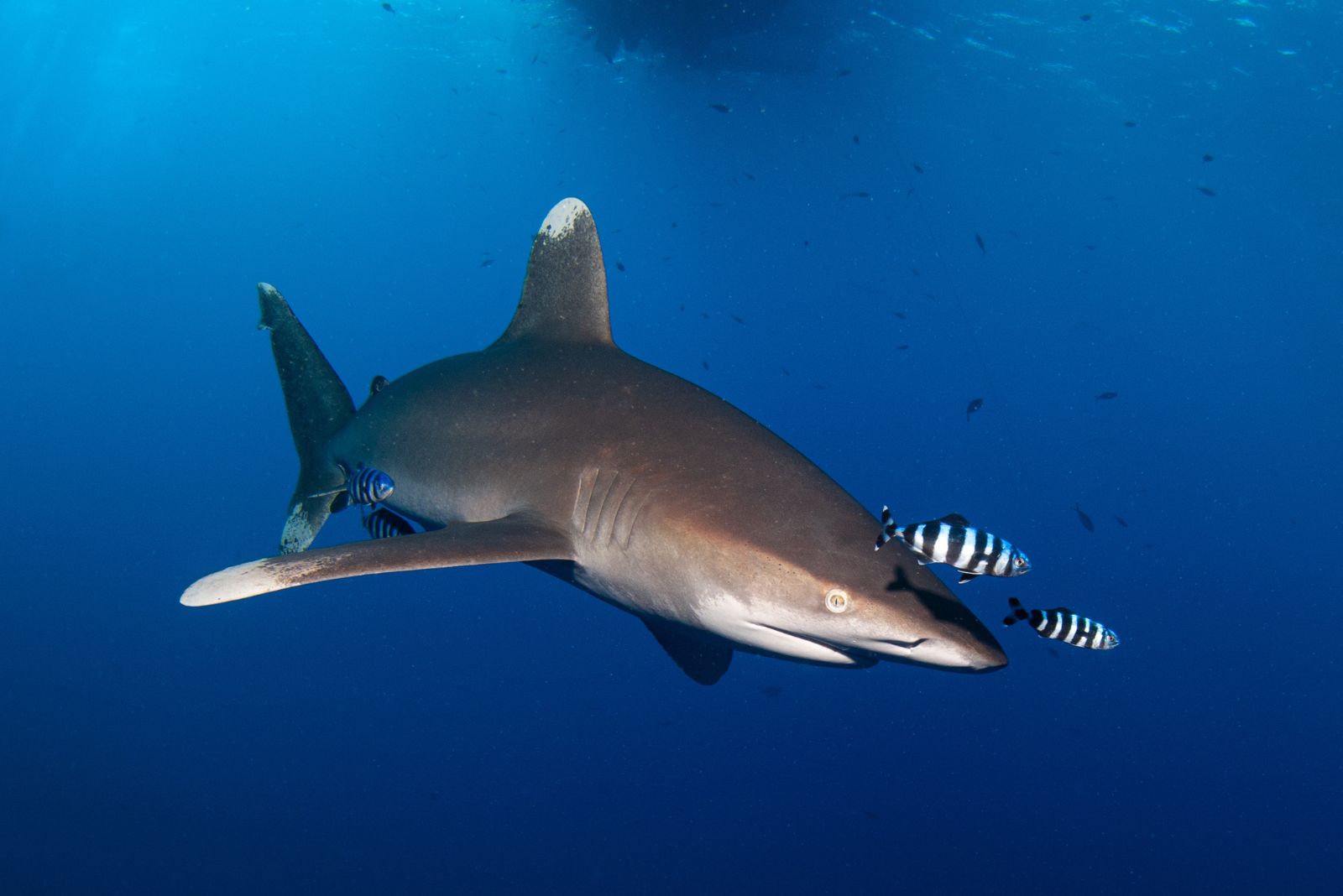
The Oceanic Whitetip might not have the size of a Great White, but its bold attitude makes up for it.
Known for its persistent curiosity, this shark tends to linger longer around potential food sources compared to others. Its white-tipped, rounded fins make it easy to identify, especially in the open ocean where it spends most of its time.
What makes it dangerous is its bold behavior. Unlike most sharks that are cautious around unfamiliar objects, Oceanic Whitetips tend to investigate persistently, often circling and closing in with confidence. This shark has a reputation for approaching shipwreck survivors and being highly competitive around food.
Found in deeper, warmer waters, it’s not a shark you’re likely to spot near the shore. However, when food is scarce, its opportunistic nature can turn aggressive, especially during feeding frenzies.
Bold, relentless, and unafraid – that’s what makes this shark stand out in the deep blue.
5. Shortfin Mako Shark
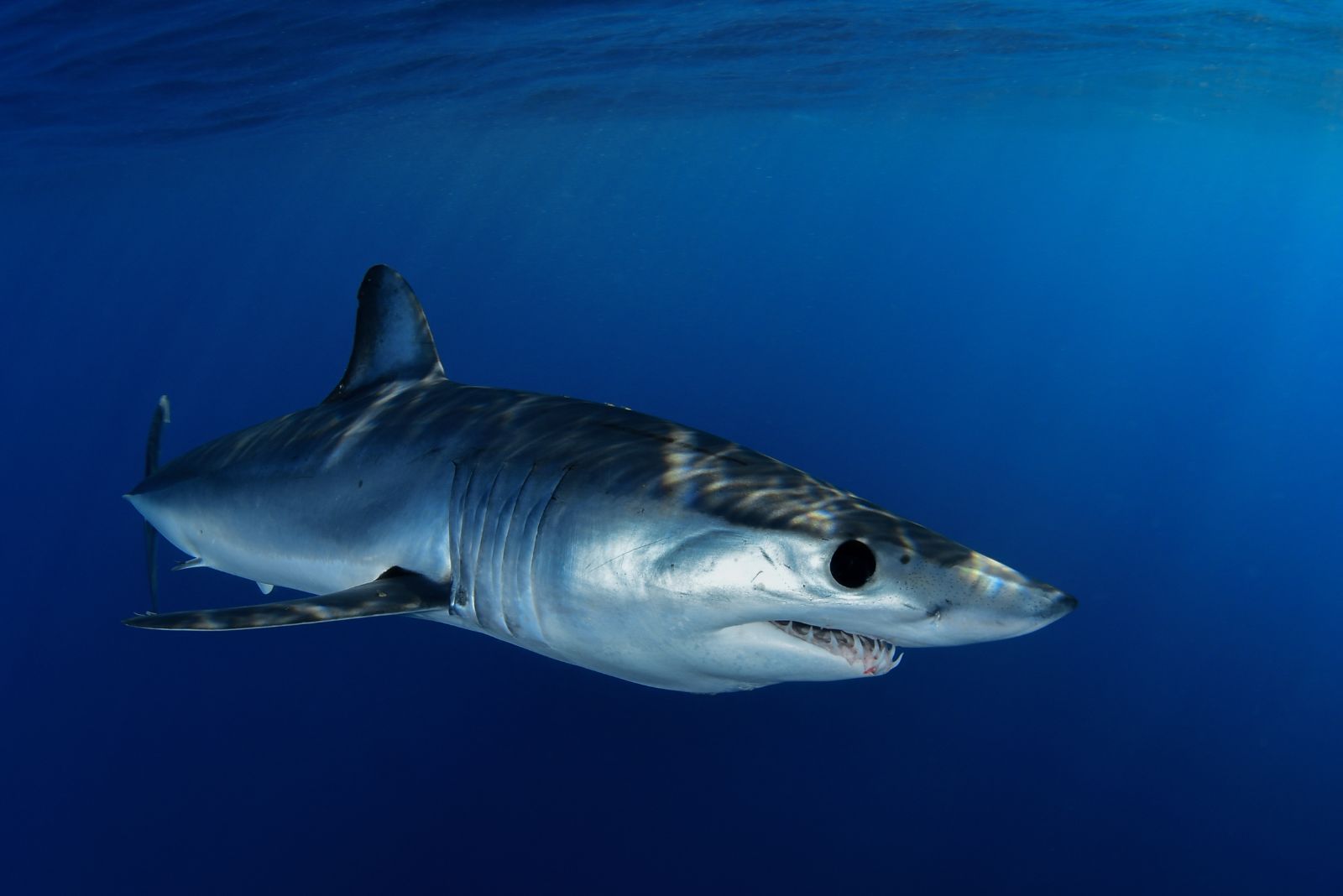
Built like a rocket with fins, the Shortfin Mako is the fastest shark in the ocean, reaching speeds of over 45 miles per hour. That speed, combined with sharp teeth and a torpedo-shaped body, makes it a force of nature.
What also makes the Makos dangerous is their high energy and tendency to launch into explosive bursts when threatened or hunting. They’re apex predators, often feeding on fast-swimming fish like tuna and swordfish, but their aggressive hunting style sometimes results in accidental clashes with humans.
Makos are known for their leaping ability, often breaching the surface during feeding. While they don’t actively seek out human interaction, their boldness and power can be dangerous if they feel provoked or entangled.
Fast, powerful, and a bit unpredictable, the Shortfin Mako is a high-velocity powerhouse you wouldn’t want to meet in murky waters.
6. Hammerhead Shark
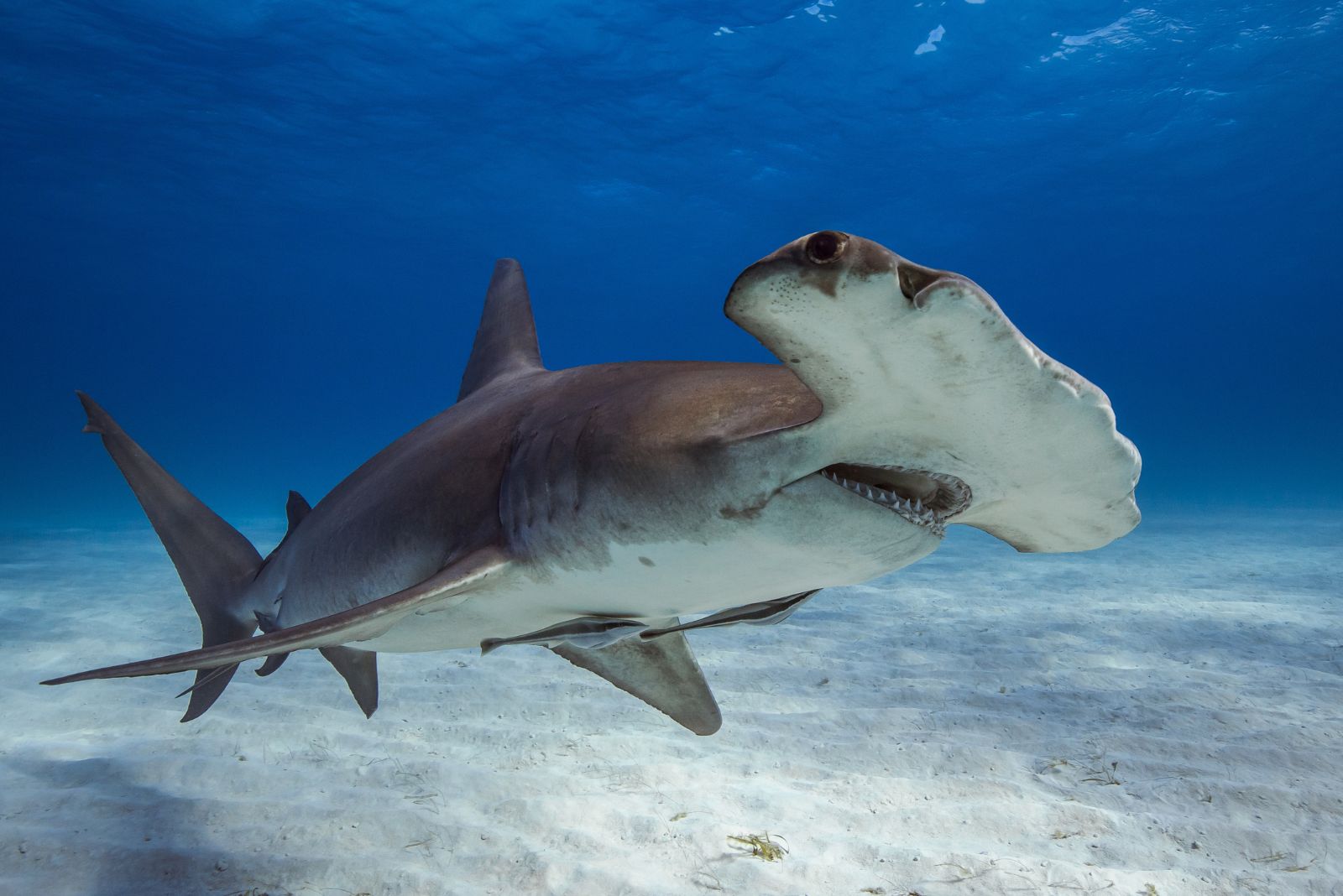
It’s hard to miss a Hammerhead with their iconic T-shaped head, but don’t let their odd looks fool you – they’re formidable hunters.
That uniquely shaped head isn’t just for show: it gives them an enhanced sense of vision and allows them to scan wider areas for prey like stingrays and small fish.
Hammerheads, especially the Great Hammerhead, can grow up to 20 feet long and are equipped with powerful jaws for crushing prey. While they’re not usually aggressive toward humans, they can become defensive in situations where they feel threatened.
Their size, power, and tendency to hunt in shallow waters bring them closer to human activity than many other sharks. Though often shy, a Hammerhead in hunting mode can be a different story.
Their boldness around food sources and occasional territorial behavior makes them one of the more unpredictable sharks in the ocean.
7. Blacktip Shark
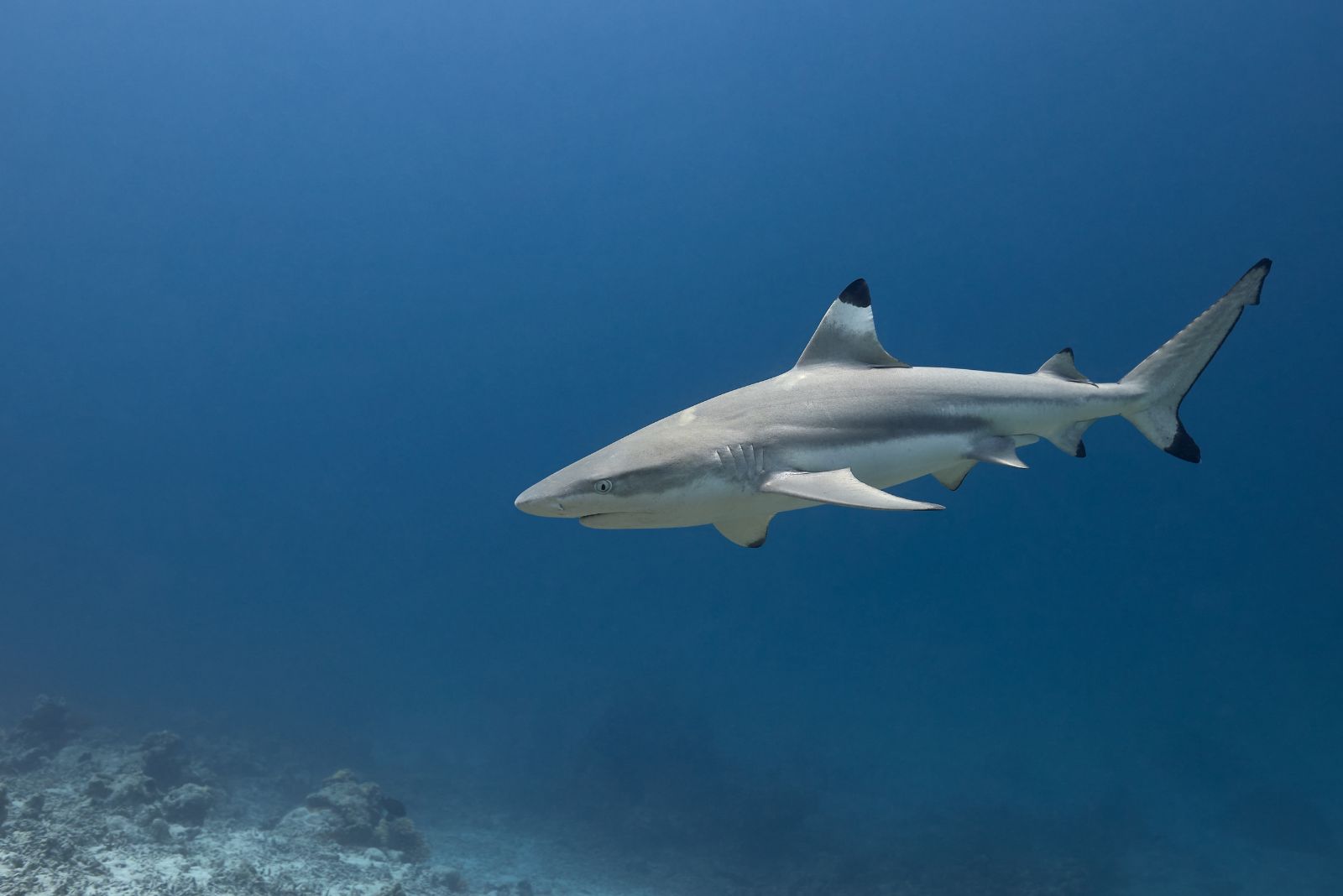
Blacktip Sharks are known for their acrobatics and quick bursts of speed near the surface. Their sleek bodies and dark-tipped fins make them easy to identify, especially in shallow, warm waters.
Their habit of feeding near the surface during dawn and dusk increases the risk of accidental encounters with humans. Blacktips are nervous feeders, meaning they often get worked up in feeding frenzies, which can lead to unintentional bites.
While not as large as some sharks on this list, their quick reactions, bold hunting style, and frequent contact with swimmers make them worth respecting.
They’re a reminder that size doesn’t always define danger, speed and confusion can be just as risky.
8. Blue Shark
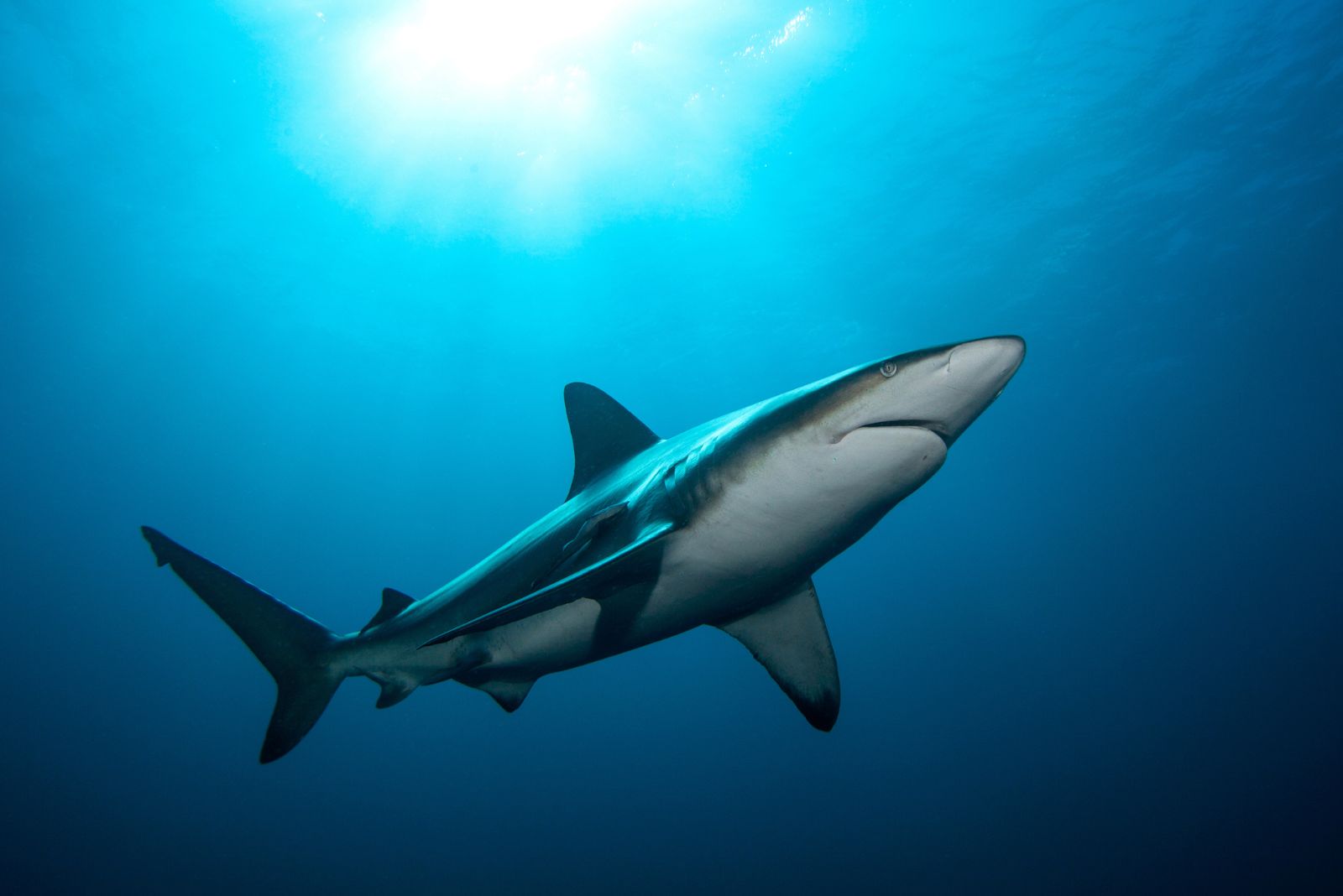
Sleek, slender, and built for the open ocean. The Blue Shark has a graceful appearance that masks its bolder tendencies.
Known for its curious nature, this shark often approaches divers and boats with a level of confidence that can catch people off guard.
Blue Sharks have been known to linger around fishing boats and become agitated during feeding frenzies, often nipping at anything nearby when the adrenaline kicks in.
Their streamlined bodies and long, pectoral fins allow them to cover vast distances, often traveling thousands of miles across oceans. Though they rarely show hostility, their confidence around humans combined with sharp teeth and opportunistic feeding habits can create risky situations.
Beautiful and bold, the Blue Shark serves as a reminder that even elegant predators deserve caution when admired up close.
9. Sand Tiger Shark
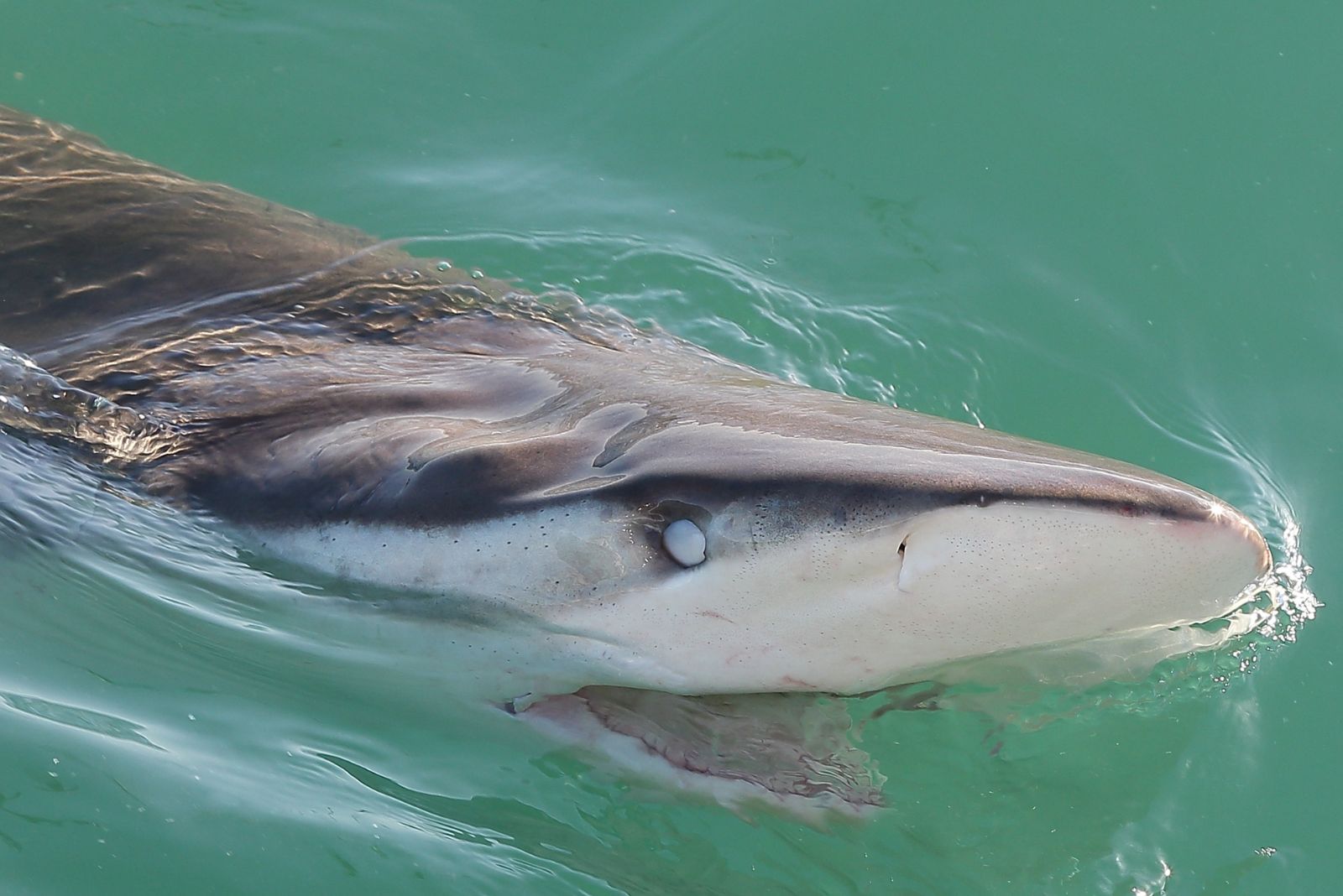
With its snaggle-toothed grin and slow, deliberate movements, the Sand Tiger Shark looks like it came straight from a shark horror film – but its reputation is a bit misleading.
Why is it dangerous? Territory and temperament. Sand Tiger Sharks are known for their territorial behavior, especially around wreck sites and reefs, where they often claim space and guard it aggressively.
While they’re generally not a threat when left undisturbed, they can become defensive when approached too closely. Their method of hunting, which involves gulping air to float near the ocean floor while stalking prey, can give the false impression of being slow-moving, but they can strike quickly when necessary.
Definitely not the kind of shark you’d want giving you a grumpy side-eye on a dive.
10. Bronze Whaler Shark

Known for its coppery shimmer, the Bronze Whaler Shark might look dazzling under the water, but it’s all business when it comes to defending its space.
These sharks are commonly found in shallow coastal areas, particularly during seasonal fish migrations, where they follow schools of prey.
Bronze Whalers are highly competitive feeders, often entering a feeding frenzy when large schools of fish are present. If a diver or swimmer happens to be nearby during this frenzy, the situation can turn risky fast, as the sharks become less aware of their surroundings. Though generally shy around humans, they’ve been known to react defensively if cornered or provoked.
Their territorial behavior, strong bite, and tendency to hunt near beaches make them a species worth giving plenty of space.
Stunning, powerful, and a bit unpredictable, just how a shark should be.

